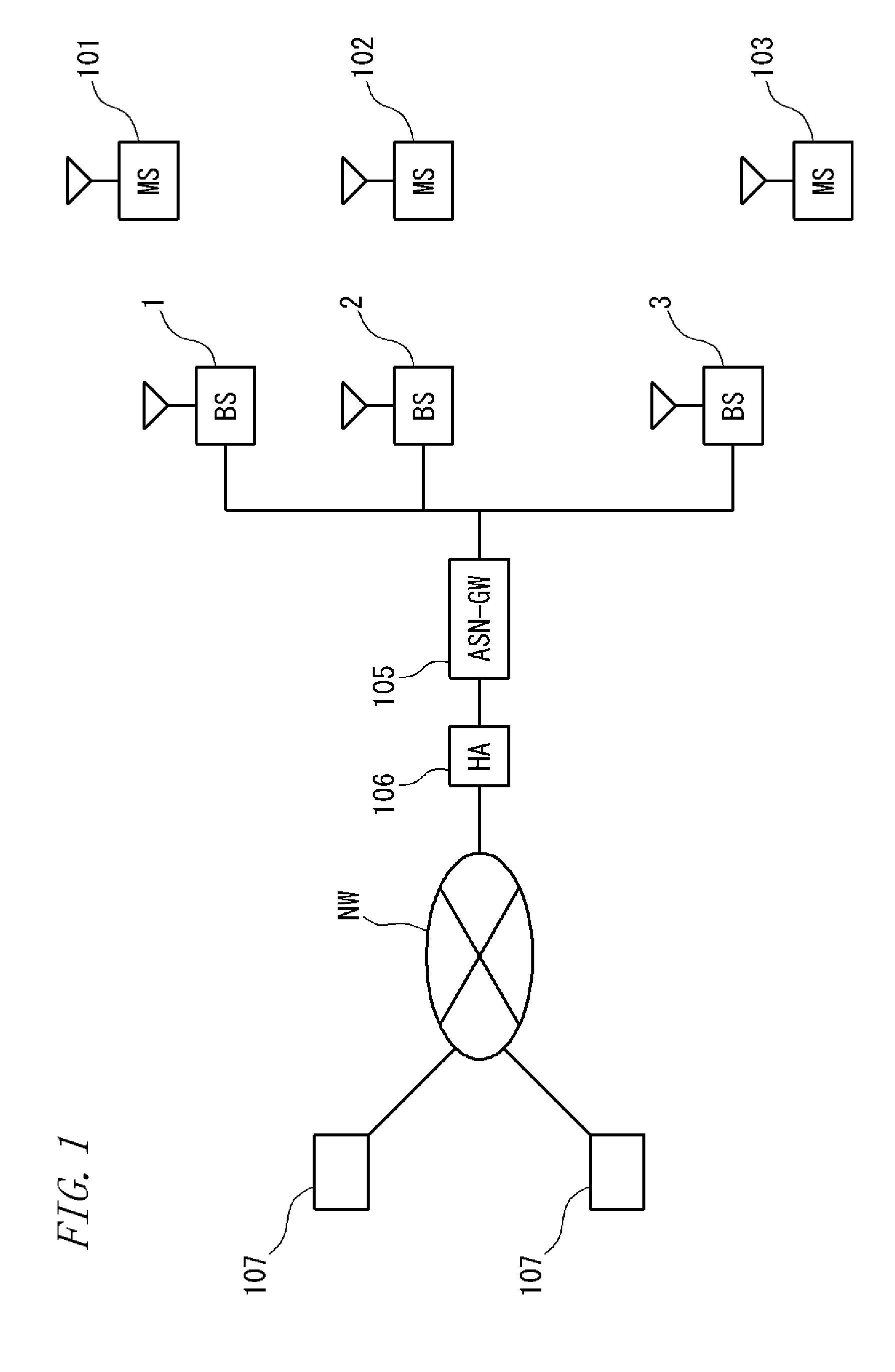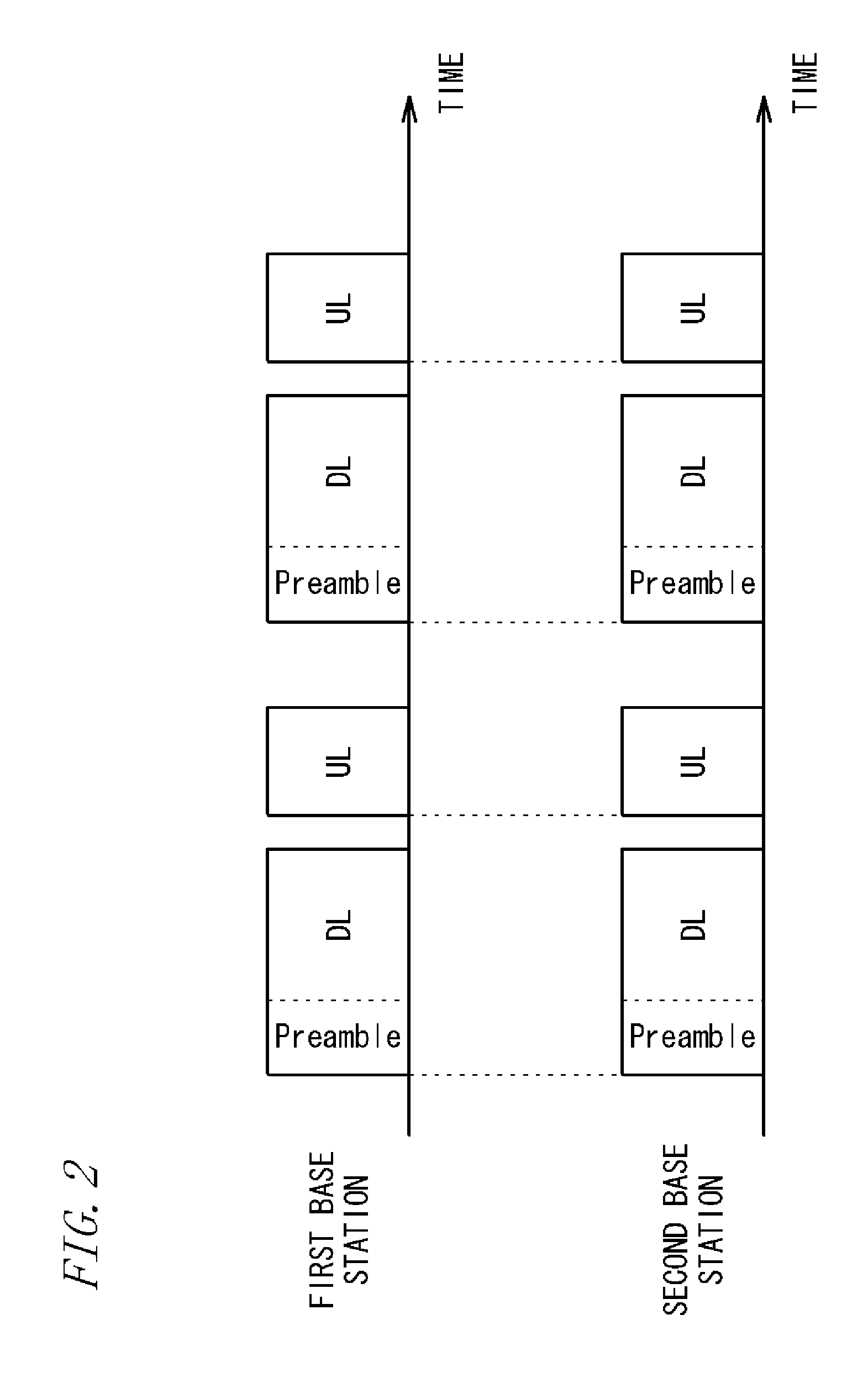Base station device
- Summary
- Abstract
- Description
- Claims
- Application Information
AI Technical Summary
Benefits of technology
Problems solved by technology
Method used
Image
Examples
fourth embodiment
2.4 Fourth Embodiment
[0285]FIG. 16 shows a configuration of a slave BS 2001b according to a fourth embodiment. As with slave BSs 2001b according to the already described embodiments, this slave BS 2001b can also receive a signal transmitted from a master BS 2001a, to perform over-the-air synchronization. The slave BS 2001b includes an antenna 2010, a first receiving unit (superheterodyne receiver) 2011, a second receiving unit (superheterodyne receiver) 2012, and a transmitting unit 2013. In addition, the slave BS 2001b includes a circulator 2014. Note that those points that are not particularly described in the fourth embodiment are the same as those in the already described embodiments.
[0286]As such, the basic configuration of the slave BS 2001b in the fourth embodiment is the same as that of slave BSs 2001b according to the already described embodiments. Particularly, the slave BS 2001b in the fourth embodiment is similar to the slave BS 2001b according to the second embodiment i...
fifth embodiment
2.5 Fifth Embodiment
[0302]FIG. 18 shows a configuration of a slave BS 2001b according to a fifth embodiment. In the fifth embodiment, as with the slave BS 2001b in the second embodiment shown in FIG. 14, a first receiving unit 2011 and a second receiving unit 2012 are provided independently of each other, and the first receiving unit 2011 and the second receiving unit 2012 are configured as direct conversion receivers. That is, the first receiving unit 2011 and the second receiving unit 2012 include band-pass filters 2111 and 2121 that allow only an uplink signal or a downlink signal received by an antenna 2010 to pass therethrough; and amplifiers 2112 and 2122 that amplify the signals having passed through the filters 2111 and 2121. Furthermore, the first receiving unit 2011 and the second receiving unit 2012 include orthogonal demodulators 2118 and 2128 that demodulate the outputs from the amplifiers 2112 and 2122 into demodulated signals I and Q; and A / D converting units 2117a, 2...
sixth embodiment
2.6 Sixth Embodiment
[0305]FIG. 19 shows a configuration of a slave BS 2001b according to a sixth embodiment. In the sixth embodiment, a common unit 2023 which is similar to the common unit 2023 in the first receiving unit 2011 and the second receiving unit 2012 in the fourth embodiment shown in FIG. 16 is provided in the first receiving unit 2011 and the second receiving unit 2012 which are of a direct conversion system in the fifth embodiment shown in FIG. 18.
[0306]A first receiving unit 2011 in the sixth embodiment includes, as circuit elements specific to the first receiving unit 2011, a filter (band-pass filter) 2111 that allows only a signal with the frequency fu to pass therethrough; and an amplifier 2112 that amplifies the signal outputted from the filter 2111.
[0307]A second receiving unit 2012 includes, as circuit elements specific to the second receiving unit, a filter (band-pass filter) 2121 that allows only a signal with the frequency fd to pass therethrough; and an ampli...
PUM
 Login to View More
Login to View More Abstract
Description
Claims
Application Information
 Login to View More
Login to View More - R&D
- Intellectual Property
- Life Sciences
- Materials
- Tech Scout
- Unparalleled Data Quality
- Higher Quality Content
- 60% Fewer Hallucinations
Browse by: Latest US Patents, China's latest patents, Technical Efficacy Thesaurus, Application Domain, Technology Topic, Popular Technical Reports.
© 2025 PatSnap. All rights reserved.Legal|Privacy policy|Modern Slavery Act Transparency Statement|Sitemap|About US| Contact US: help@patsnap.com



